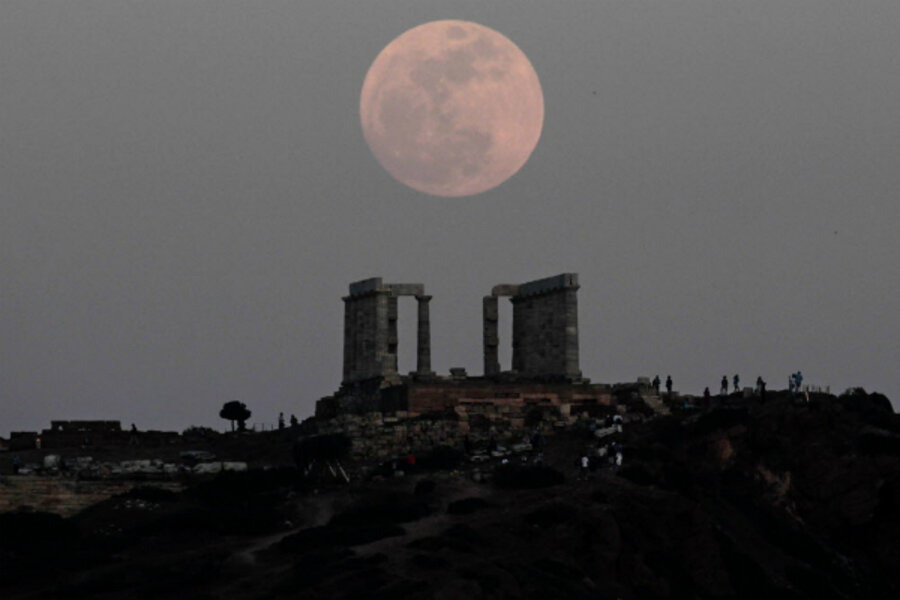Supermoon: What makes it 'super'?
Loading...
| Los Angeles
A "supermoon" rises this weekend.
The biggest and brightest full moon of the year graces the sky early Sunday as our celestial neighbor swings closer to Earth than usual.
While the moon will appear 14 percent larger normal, skywatchers won't be able to notice the difference with the naked eye. Still, astronomers say it's worth looking up and appreciating the cosmos.
"It gets people out there looking at the moon, and might make a few more people aware that there's interesting stuff going on in the night sky," Geoff Chester of the U.S. Naval Observatory said in an email.
What makes it a 'supermoon'? The Christian Science Monitor explains:
Supermoons occur once a year. This month's super-strawberry moon will be (slightly) larger and brighter than others because its full-moon phase comes as the moon makes its closest approach to Earth.
The moon's orbit around the third rock from the sun traces an elliptical path. At closest approach, or perigee, the moon swings to within 362,570 kilometers (224,793 miles) of Earth, while its most-distant point, or apogee is 405,410 km. But those are averages.
Sunday night, the moon's perigee will come within 356,989 km of Earth, about 2 percent closer than average. And the moon reaches full status about 20 minutes after perigee.
Some viewers may think the supermoon looks more dazzling but it's actually an optical illusion. The moon looms larger on the horizon next to trees and buildings.
The moon will come within 222,000 miles of Earth and turn full around 7:30 a.m. EDT, making it the best time to view.
As in any supermoon event, high tides are forecast because of the moon's proximity, but the effect is expected to be small.
This supermoon is also a strawberry moon, according to the Old Farmer's Almanac. The first full moon in June is called a strawberry moon, marking the harvest of strawberries after their short growing season ends.
But you can forget about the myths that swirl every time a supermoon appears. There's no link to higher crime or bizarre behavior. Scientists say that's just lunacy.
Copyright 2013 The Associated Press.







